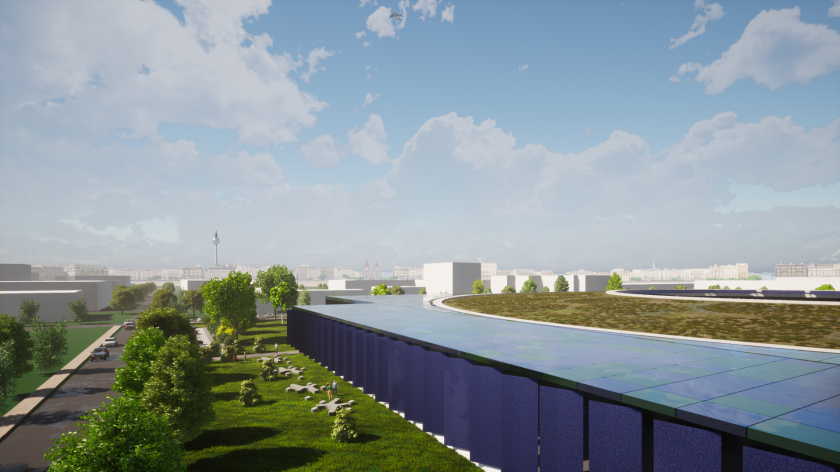The future of BESSY

This is what the successor source BESSY III could look like in the future. © Rendering: HZB
At the end of February 2024, a team at HZB published an article in Synchrotron Radiation News (SRN). They describe the next development goals for the light source as well as the BESSY II+ upgrade programme and the successor source BESSY III.
In autumn 2023, HZB celebrated 25 years of research at the BESSY II light source in Berlin-Adlershof. To continue offering scientists from all over the world the best research opportunities in the coming decades, it is important to have a vision for BESSY II. In addition, many light sources around the world are currently being modernised or even newly built to keep up with the latest research questions and contribute with state-of-the art research infrastructures.
The article "Material Discovery at BESSY" shows the relevance of BESSY light source for the research questions of the future. The HZB team describes the goals of the BESSY II+ upgrade programme. Among other things, the programme aims to expand operando techniques that are of great benefit in developing materials for the energy transition.
BESSY II+ is a bridge between BESSY II and the successor source BESSY III, which is scheduled to go into operation in the mid-2030s. It is set to become the "materials discovery machine": a combination of the extremely bright, soft 4th generation light source, the integrated research campus in Berlin-Adlershof and the quantitative measurement capabilities of the national metrology institute (PTB, Physikalisch-Technische Bundesanstalt) from synchrotron research.
The article has been published in open access and can be read in the journal SRN, which specialises in synchrotron research.
DOI: https://doi.org/10.1080/08940886.2024.2312051
-
A new way to control the magnetic properties of rare earth elements
The special properties of rare earth magnetic materials are due to the electrons in the 4f shell. Until now, the magnetic properties of 4f electrons were considered almost impossible to control. Now, a team from HZB, Freie Universität Berlin and other institutions has shown for the first time that laser pulses can influence 4f electrons- and thus change their magnetic properties. The discovery, which was made through experiments at EuXFEL and FLASH, opens up a new way to data storage with rare earth elements.
-
BESSY II shows how solid-state batteries degrade
Solid-state batteries have several advantages: they can store more energy and are safer than batteries with liquid electrolytes. However, they do not last as long and their capacity decreases with each charge cycle. But it doesn't have to stay that way: Researchers are already on the trail of the causes. In the journal ACS Energy Letters, a team from HZB and Justus-Liebig-Universität, Giessen, presents a new method for precisely monitoring electrochemical reactions during the operation of a solid-state battery using photoelectron spectroscopy at BESSY II. The results help to improve battery materials and design.
-
HZB magazine lichtblick - the new issue is out!
In his search for the perfect catalyst, HZB researcher Robert Seidel is now getting a tailwind – thanks to a ERC Consolidator Grant. In the cover story, we explain why the X-ray source BESSY II plays an important role for his research.
